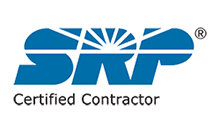In the realm of Florence, AZ household woes, few situations are as universally dreaded as dealing with a clogged toilet. While most people simply wonder how to unclog a toilet, for others, that moment when the water level stubbornly refuses to go down can incite panic, frustration, and exasperation. In this enlightening piece, we will delve deep into the labyrinth of toilet mechanics and explore a tool that stands as the unsung hero in times of plumbing distress: the plunger. This blog post aims to be your go-to guide for navigating through the worrisome waters of toilet troubles.
The Unassuming Might of the Plunger Against a Clogged Toilet
Often underestimated, a plunger is a potent tool designed to clear stopped or clogged drains. It works on the simple principle of creating a vacuum and utilizing the subsequent pressure to dislodge obstructions. Distinguished by its long wooden handle and rubber cup-like formation at the end, the plunger stands as the first line of defense against clogs of various natures. However, wielding a plunger is not merely about vigor; it’s a matter of finesse, technique, and timing.
Understanding the Types of Plungers
Before we delve into the method of utilizing a plunger, it’s pivotal to identify the right type for your situation:
1. Cup Plunger:
Identifiable by its flat rubber cup, this traditional style is suited for flat-surface drains like those in a bathtub, sink, or shower.
2. Flange Plunger:
Enhanced with an extra ring of rubber (the flange), it’s explicitly designed for the curves of a toilet drain.
3. Accordion Plunger:
Characterized by its accordion-like rubber design, it produces powerful plunging force specifically for toilets.
For toilet clogs, the flange and accordion plungers are your optimal choices due to their tailored designs.
Methodical Mastery: Steps to Utilize a Plunger for a Clogged Toilet
Step 1: Preliminary Preparations
Before embarking on your unclogging journey, arm yourself with rubber gloves and old towels or newspapers to manage potential splashes or spills. Also, if the water level in the toilet is high, consider removing some to prevent splashing during plunging.
Step 2: Plunger Positioning
Insert the plunger into the bowl, ensuring the flange (if using a flange plunger) is extended and the rubber cup fully encases the exit hole, creating a secure seal.
Step 3: The Plunging Technique
Initiate a gentle plunge to expel the air from the plunger cup, establishing a solid vacuum. Then, apply vigorous and rhythmic up-and-down movements, maintaining the seal and enabling the pressure to work against the clog. Remember, you are pulling the clog out, not forcing it down the drain.
Step 4: Persistence and Patience
Endure with persistence, it might take a few attempts to effectively dislodge stubborn clogs.
Step 5: The Flush Test
After a series of concerted plunges, cautiously flush the toilet to observe whether the blockage has been resolved. If the water flows freely, success has been achieved! If not, repeat the plunging process.
Common Mistakes and Pro Tips When For Dealing With a Clogged Toilet
- Mistake: Inconsistent Seal – Ensure a consistent, airtight seal between the plunger and the exit hole to maximize efficiency.
- Pro Tip: Hot Water Assistance – Sometimes, pouring hot water into the bowl pre-plunge can soften the obstruction, making it easier to dislodge. Just remember, we are talking about hot water, nothing boiling!
- Mistake: Rapid Initial Plunge – A gentle initial plunge prevents messy water splashes and ensures better control.
- Pro Tip: Dish Soap – Introducing a few squirts of dish soap prior to plunging can lubricate the passage, assisting in smoother clog removal.
- Mistake: Hasty Surrender – Sometimes, persistence is key. Clogs might not always relent immediately.
When to Seek Professional Assistance for a Clogged Toilet
While a plunger can rectify numerous blockages, some clogs are stubbornly resistant or symptomatic of deeper plumbing issues. If persistent plunging, augmented with alternative household methods like using a plumbing snake or hot water and detergent fails, it’s time to contact Florence, AZ area professional plumbers to avoid further damage or pipe ruptures.
Wrapping It Up: A Plunge into Simplicity and Self-Sufficiency
Embracing the might and methodology of the plunger not only enhances your domestic problem-solving repertoire but also offers an immediate solution in times of plumbing despair. It liberates you from the constraints of waiting for emergency plumbing help for a task that, often, can be managed independently. Moreover, plungers are budget-friendly, eco-friendly, and indispensable in ensuring the smooth functioning of your home’s sanitation system.
By adhering to the strategies elucidated, adopting a blend of patience and technique, and understanding when to herald professional intervention, you stand well-equipped to navigate through the murky waters of a clogged toilet, emerging victorious and unscathed.











